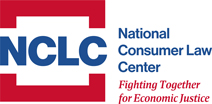Beginning January 1, 2012, the United States takes a big step forward in our path to saving energy. New energy-efficient lighting standards go into effect, part of a bipartisan energy bill signed into law by President Bush in 2007.
Here’s what consumers need to know about the transition to more efficient light bulbs that will save consumers money, create jobs for Americans, and reduce energy use.
Consumers can choose from a wide variety of light bulbs, including more efficient incandescent bulbs
Choices range from improved incandescent bulbs using halogen technology, compact-fluorescent bulbs (CFLs) and light-emitting diodes (LEDs).
Consumers will save money
- Expected savings are roughly $100 per household each year, for a total savings of more than $10 billion per year nationally, once standards are in full effect.
- Savings are realized because the new, more efficient bulbs use at least 28% less energy and typically last at least 10 times longer than traditional incandescent bulbs.
New standards are creating new jobs for Americans
Businesses are building new plants in the U.S.
- Osram Sylvania: retooled a plant in Pennsylvania to make the new energy-efficient incandescent bulb
- TCP: new CFL factory in Ohio
- Cree, Lighting Science Group, and Philips: All have U.S.-based LED factories
Energy-efficiency standards improve our health and environment through cleaner air
Coal-fired electricity is a major source of human-caused mercury emissions in the U.S., according to the U.S. Environmental Protection Agency. CFL bulbs do not emit mercury but do however, contain very small amounts of mercury. Therefore:
- Be sure to properly dispose of CFL bulbs to keep the small amount of mercury in them contained. Lowes, Home Depot, and IKEA stores now offer free nationwide collection points to recycle CFL bulbs.
- Also, in the event that a CFL bulb breaks, clean up is important.
Find locations to recycle and how to properly clean up a broken CLF bulb.
Fun factIf every home in the U.S. replaced just one traditional inefficient incandescent bulb with an efficient CFL, it would save enough energy to light more than 3 million homes and is equivalent to removing 800,000 cars from the road.
|
Efficient light is bright
Look for the lumen label when purchasing efficient bulbs; higher lumens = greater brightness. Efficient lighting delivers the same amount of lumens while using less energy than traditional inefficient lighting:
1600 lumens = 100 watt incandescent bulb
1100 lumens = 75 watt incandescent bulb
800 lumens = 60 watt incandescent bulb
450 lumens = 40 watt incandescent bulb
Consumers like the new bulbs
Try it; you will probably like it! Both industry and nonpartisan consumer surveys show that the majority of Americans are already using the new light bulbs and most are either “satisfied” or “very satisfied” with them.
